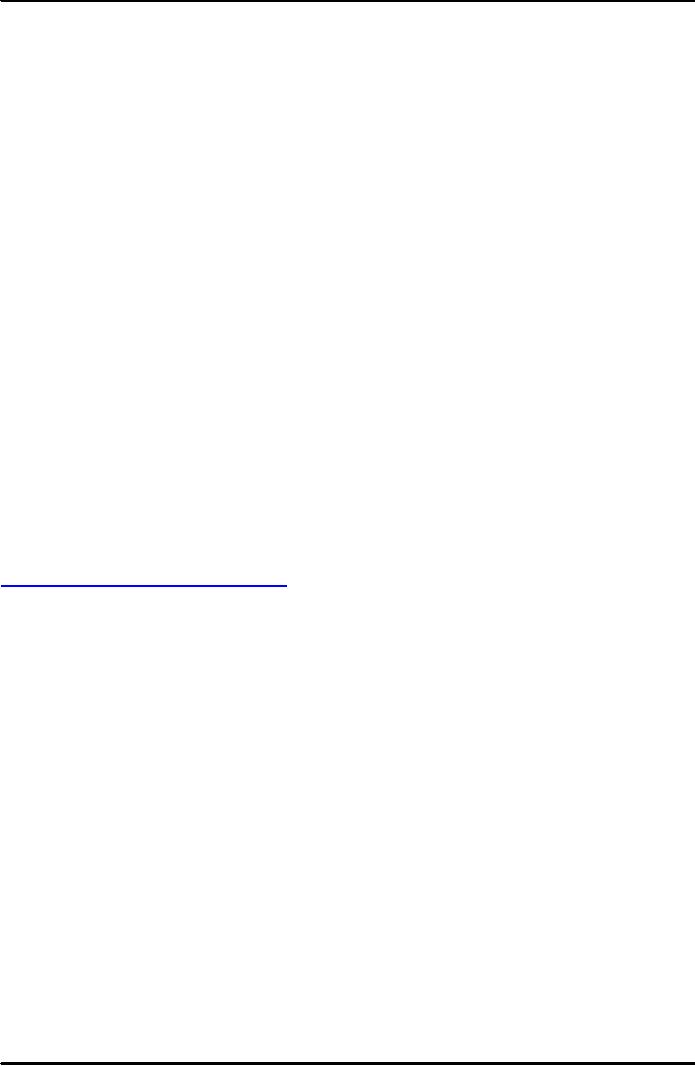 |

Introduction
to Cultural Anthropology
SOC401
VU
Lesson
27
POLITICAL
ORGANIZATION (continued)
Need
for Social Control
All
forms of political organization must
provide means for social
control. Every culture has
defined what
are
considered to be normal, proper or
expected ways of behaving in society.
These expected ways
of
behaving
are referred to as social
norms.
Social
norms range from etiquette to
laws and imply different
forms of enforcement and
sanctions.
Breaking
some social norms does
not result in serious
consequences whereas others
can result in severe
punishment.
Consider for example the
consequence of taking another person's
life or of stealing
something.
Social
Norms
All
social norms are sanctioned
to varying degrees according to the
values held by different
cultures.
Positive
social norms reward people
for behaving in socially expectable
ways (ranging from praise or
social
approval
to awards or medals). Negative
social norms punish people for
violating the norms (ranging
from
disapproval
to corporal punishment).
Maintaining
Social Control
Band
and tribal societies (Inuit
and Kung) maintain social
control by means of informal
mechanisms such
as
socialization, public opinion,
lineage obligations, age organizations
and sanctions.
Societies
control behavior by more
formal mechanisms, such as
through laws and law
enforcement
agencies,
whose major function is maintaining
social order and resolving
conflicts.
Social
Control
Band
and tribal societies (Inuit
and Kung) maintain social
control by means of informal
mechanisms such
as
socialization, public opinion,
lineage obligations, age organizations
and sanctions. Societies
control
behavior
by more formal mechanisms
whose major function is maintaining
social order and
resolving
conflicts.
Informal
Mechanisms
Socialization
ensures that people are taught what
their social norms are.
Public opinion or social
pressure
often
serves as an effective mechanism to avoid
censure and rejection. Age organization
provides distinct
age
categories with defined sets
of social roles.
Formal
Mechanisms
Song
Duets: amongst
the Inuits to settle
disputes
Social
Intermediaries: like
the Leopard-skin Chief of the Neur in southern
Sudan settles murder
disputes
by
property settlements
Moots:
are
formal airings of disputes
involving kinsmen and friends of
litigants and the adjudicating
bodies
are
ad hoc
Courts
and Codified Laws: forbid
individual use of force and provides
legal frameworks established
by
legislative
bodies, interpreted by judicial
bodies and implemented by administrative
systems like law
enforcement
agencies
60

Introduction
to Cultural Anthropology
SOC401
VU
Useful
Terms
Administrative
systems:
the
system of government officials/bureaucrats who
are responsible for
running
public
affairs
Judicial
systems:
the
system of courts which interprets the
laws
Legislative
systems: systems
which provide the laws for a
particular society, often legislatures or
legislative
assemblies
are elected by the people of a particular
locality, i.e. province or a
state
Law
enforcement agencies:
agencies
which enforce the law, like the police
fro example
Litigants:
aggrieved
parties involved in a legal
dispute
Ad
Hoc:
arbitrary,
not following any
established procedure
Suggested
Readings
Students
are advised to read the
following chapters to develop a better understanding
of the various
principals
highlighted in this hand-out:
Chapter
12 in `Cultural
Anthropology: An Applied Perspective' by
Ferrarro and/or Chapter 23 in
`Anthropology' by
Ember
and Pergrine
Internet
Resources
In
addition to reading from the
textbook, please visit the
following web-site for this
lecture, which
provide
useful
and interesting information:
Social
Control
http://en.wikipedia.org/wiki/Social_control
61
Table of Contents:
- WHAT IS ANTHROPOLOGY?:Cultural Anthropology, Internet Resources
- THE CONCEPT OF CULTURE AND THE APPLICATION OF CULTURAL ANTHROPOLOGY
- MAJOR THEORIES IN CULTURAL ANTHROPOLOGY:Diffusionism
- GROWTH OF ANTHROPOLOGICAL THEORY (continued):Post Modernism
- METHODS IN CULTURAL ANTHROPOLOGY:Comments on Fieldwork
- METHODS IN CULTURAL ANTHROPOLOGY (continued):Census Taking
- COMPARATIVE STUDY OF PRODUCTION, DISTRIBUTION AND CONSUMPTION IN DIFFERENT PARTS OF THE WORLD
- ECONOMIC ANTHROPOLOGY (continued):THE DISTRIBUTION OF GOODS AND SERVICES
- FOCUSING ON LANGUAGE:Languages of the World, Structure of Language
- FOCUS ON LANGUAGE (continued):Levels of Complexity, Cultural Emphasis
- OBTAINING FOOD IN DIFFERENT CULTURES:Optimal Foraging, Suggested Readings
- FOOD AND CULTURE (continued):Food Collectors, Food Production
- OBTAINING FOOD IN DIFFERENT CULTURE (continued):Pastoralism, Agriculture
- RELEVANCE OF KINSHIP AND DESCENT:Kinship Criteria, Rules of Descent
- KINSHIP AND DESCENT (continued):Tracing Descent, Primary Kinship Systems
- THE ROLE OF FAMILY AND MARRIAGE IN CULTURE:Economic Aspect of Marriage
- ROLE OF FAMILY AND MARRIAGE IN CULTURE (continued):Family Structures
- GENDER AND CULTURE:Gender Stratification, Suggested Readings
- GENDER ROLES IN CULTURE (continued):Women Employment, Feminization of Poverty
- STRATIFICATION AND CULTURE:Social Ranking, Dimensions of Inequality
- THEORIES OF STRATIFICATION (continued):The Functionalists, Conflict Theorists
- CULTURE AND CHANGE:Inventions, Diffusion, Donor, Conventional
- CULTURE AND CHANGE (continued):Cultural Interrelations, Reaction to Change
- CULTURE AND CHANGE (continued):Planned Change, Globalization
- POLITICAL ORGANIZATION:Bands, Tribal Organizations, Chiefdoms
- POLITICAL ORGANIZATION (continued):State Systems, Nation-States
- POLITICAL ORGANIZATION (continued):Social Norms, Informal Mechanisms
- PSYCHOLOGY AND CULTURE:Emotional Development, Psychological Universals
- PSYCHOLOGY AND CULTURE (continued):Origin of Customs, Personality Types
- IDEOLOGY AND CULTURE:Ideology in Everyday Life, Hegemony
- IDEOLOGY AND CULTURE (Continued):Political ideologies, Economic Ideology
- ASSOCIATIONS, CULTURES AND SOCIETIES:Variation in Associations, Age Sets
- ASSOCIATIONS, CULTURES AND SOCIETIES (continued):Formation of Associations
- RACE, ETHNICITY AND CULTURE:Similarity in Human Adaptations
- RACE, ETHNICITY AND CULTURE (continued):Inter-group Relations
- CULTURE AND BELIEFS:Social Function of Religion, Politics and Beliefs
- LOCAL OR INDIGENOUS KNOWLEDGE:Changing Definitions of Local Knowledge
- LOCAL OR INDIGENOUS KNOWLEDGE (continued):The Need for Caution
- ANTHROPOLOGY AND DEVELOPMENT:Influence of Development Notions
- ANTHROPOLOGY AND DEVELOPMENT (Continued):Contentions in Development
- ANTHROPOLOGY AND DEVELOPMENT (Continued):Operational
- CULTURAL ANTHROPOLOGY AND ART:Relevance of Art, Art and Politics
- CULTURAL ANTHROPOLOGY AND ART (continued):Art as a Status Symbol
- ETHICS IN ANTHROPOLOGY:Ethical Condemnation, Orientalism
- RELEVANCE OF CULTURAL ANTHROPOLOGY:Ensuring Cultural Survival